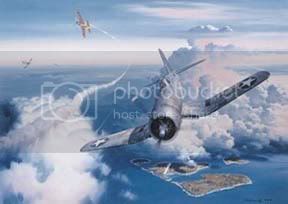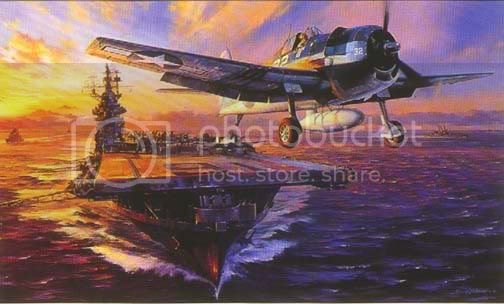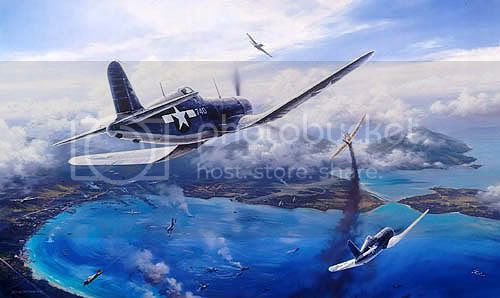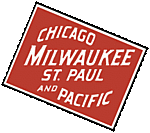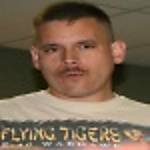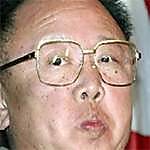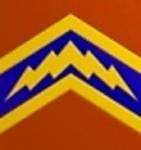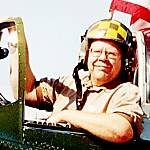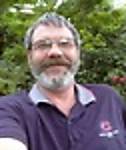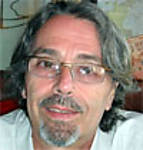Have a few ideas already.....

:-)
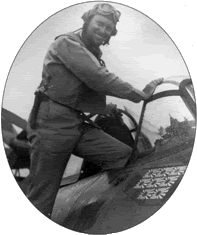
Lt. Stanley W. "Swede" Vejtasa, USN
Lt. Vejtasa set a record for Wildcat pilots with seven victories during one day during the Battle of Santa Cruz. This aviator from VF-10 claimed 5 'Vals' and 2 'Kates', and possibly saved the Enterprise from destruction. Originally a Dauntless pilot on the Yorktown, he had transferred to fighters, and had fought in the Battle of Coral Sea. He received the Navy Cross for his actions at Santa Cruz.
-----------------------------------------------------------------------------------------------------------------------------------------
Stanley W. "Swede" Vejtasa shot down Japanese fighters while flying a lightly armed dive-bomber. Born in Montana, he joined the Navy just before the attack on Pearl Harbor. After pilot training, he was assigned to the USS Yorktown flying the Douglas SBD dive-bomber. The Yorktown, stationed on the East Coast, steamed through the Panama Canal and into the Pacific. Vejtasa got his first taste of combat, when Scouting Squadron Five (VS-5) flew strikes against Japanese targets in the Marshall and Gilbert Islands. In February 1942, VS-5 raided enemy shipping near New Guinea, and Vejtasa made a direct hit on a transport. After 105 days at sea, the Yorktown hit Tulagi in the Solomon Islands. On his second mission over Tulagi, Vejtasa was attacked by a Mitsubishi Rufe, a Zero with a float. Vejtasa outmaneuvered the enemy fighter and, with the help of a squadron mate, shot it down. A few days later in the Coral Sea, during historys first battle between carrier fleets, Vejtasa put a bomb squarely into the Japanese light carrier Shoho. The ship sank the next day after taking more than 12 direct hits. On 8 May 1942, one day after the sinking of the Shoho, he led 4 SBDs on an anti-torpedo patrol and added more enemy fighters to his score. Vejtasa was soon sent to fly Grumman F4F Wildcats with Fighting Ten (VF-10), "The Grim Reapers." On 26 October 1942, Vejtasa was leading a combat air patrol from the USS Enterprise during the Battle of Santa Cruz. Finding a formation of enemy dive-bombers just short of their release points, Vejtasa shot down 2. Then he spotted 11 enemy torpedo bombers making a run on the Enterprise. In the next few minutes, he shot down 5 of these planes, scattering the attackers before they had a chance to finish their torpedo runs. For Vejtasa it was 7 victories in one day! He flew with VF-10 until May 1943. During this time, he flew missions from the USS Enterprise and from the islands of Guadalcanal and Espíritu Santo. When the combat cruise of "The Grim Reapers" was finished, he went to NAS Atlantic City, New Jersey, to instruct pilots forming new squadrons. Eager for more combat, Vejtasa became Air Group Commander on a light carrier working up for the invasion of Japan, but the war ended before he could deploy. After the war, in a very distinguished career, he served 16 1/2 years of carrier duty as a pilot, ships officer and ultimately Commanding Officer, USS Constellation. During Vietnam, he was Commander of Fleet Air, Mirimar, and was in charge of all training conducted on the West Coast. Officially credited with 11 victories, he has many decorations, including 3 Navy Crosses. *
==============================================================================
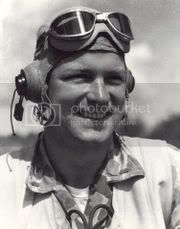

The most successful Corsair pilot in the Navy or Marine Corps was Marine Lt. Robert Murray Hanson of VMF-215 with 25 victories - all made between August 1943 and February 1944, scoring 20 of these kills in a 17 day period.
The son of missionaries, he was born in Lucknow, India, and became the heavyweight wrestling champion of the United Provinces before the war. On a bicycle trip in pre-war Europe, he was in Vienna in 1938 when the Nazis took over. He attended Hamline University in St. Paul, where he continued wrestling.
VMF-214
Hanson started his combat career with the original VMF-214, when the unit was known as the "Swashbucklers," before Pappy Boyington and the "Black Sheep" assumed the squadron number. Other pilots noted Hanson as somewhat belligerent, who easily took a dislike to other fliers. But he was an excellent gunner.
On Hanson's first combat mission, August 4, 1943, he flew wing for 1st. Lt. Stanley "Chief" Synar. Returning from a strafing run against the Shortlands, the Swashbucklers were jumped by the Japanese. One pounced on Chief, dived and then came up beneath him. His gunfire struck the cockpit and injured Synar. But Hanson got behind Synar's attacker, and "shot his ass off," only to get shot up himself, his Corsair taking a 20mm rounds between the guns, in the flap, and in the right stabilizer. In a probable case of mistaken identity, Hanson reported his victim as a Zero, although the more experienced Synar described the white spinner, in-line engine, and rows of exhaust stacks that almost certainly indicated a Ki-61 Tony. Later that month, in a landing mix-up, he stomped on his brakes, flipping over and destroying his Corsair (#18072).
The next day, August 26, Hanson scored his second victory on a B-24 escort. His supercharger was acting up, and he lagged behind his division, permitting him to surprise a lone Zero that rashly attacked the Corsairs. Hanson's first shots had little effect, but he closed in, gave another burst, and the Zero flamed from the wing root and went down.
(Hanson's VMF-214 experiences are taken from Bruce Gamble's Black Sheep: The Definitive Account of Marine Fighting Squadron 214 in World War II.)
VMF-215
His first combat tour with VMF-215 included the Bougainville landings on November 1, 1943. He achieved ace status that day when he downed a B5N and two A6Ms over Empress Augusta Bay at about 1345 hours. He was shot down himself and was shortly picked up unhurt from the water. But during his second combat tour, he really ran up his score, shooting down Japanese planes in clumps of three, four and five. On January 14, 1944 he downed five Zeros, on the 24th he claimed another four, on the 26th three, and on the 30th two Zeros and a Tojo.
On February 3, 1944, one day before his 24th birthday, Hanson participated in a fighter sweep. On the return flight, he left his flight path to strafe a lighthouse on Cape St. George, New Ireland, that had proved troublesome as a enemy flak tower and observation post. His friends watched from above as Hanson's big blue-gray Corsair ran at the tower, its six machine guns peppering the structure. Suddenly, they were horrified to see Hanson's aircraft shudder as its wing disintegrated from flak hits. The young ace tried to ditch, but his aircraft hit the surface, cartwheeled and crashed, leaving only scattered debris.
Medal of Honor Citation:
Rank and organization: First Lieutenant, U.S. Marine Corps Reserve. Born: 4 February 1920, Lucknow, India. Accredited to: Massachusetts. Other Navy awards: Navy Cross, Air Medal.
For conspicuous gallantry and intrepidity at the risk of his life and above and beyond the call of duty as fighter pilot attached to Marine Fighting Squadron 215 in action against enemy Japanese forces at Bougainville Island, 1 November 1943; and New Britain Island, 24 January 1944. Undeterred by fierce opposition, and fearless in the face of overwhelming odds, 1st Lt. Hanson fought the Japanese boldly and with daring aggressiveness. On 1 November, while flying cover for our landing operations at Empress Augusta Bay, he dauntlessly attacked 6 enemy torpedo bombers, forcing them to jettison their bombs and destroying 1 Japanese plane during the action. Cut off from his division while deep in enemy territory during a high cover flight over Simpson Harbor on 24 January, 1st Lt. Hanson waged a lone and gallant battle against hostile interceptors as they were orbiting to attack our bombers and, striking with devastating fury, brought down 4 Zeroes and probably a fifth. Handling his plane superbly in both pursuit and attack measures, he was a master of individual air combat, accounting for a total of 25 Japanese aircraft in this theater of war. His great personal valor and invincible fighting spirit were in keeping with the highest traditions of the U.S. Naval Service.
Hanson was the third and last Marine Corsair pilot to receive the Medal of Honor and the youngest.
--------------------------------------------------------------------------------
Besides Hanson, VMF-215 also boasted two high-scoring aces, Captain Donald N. Aldrich and Captain Harold L. Spears, senior flight leaders of the squadron. Aldrich had been turned down by American recruiters before Pearl Harbor because he was married. Undaunted, he enlisted in the Royal Canadian Air Force and got his wings in November 1941. When the United States entered the war, Aldrich was able to return home, where he eventually got his wings of gold as a Marine aviator. Spears graduated from flight training in August 1942 and went out to the Pacific with VMF-215.

